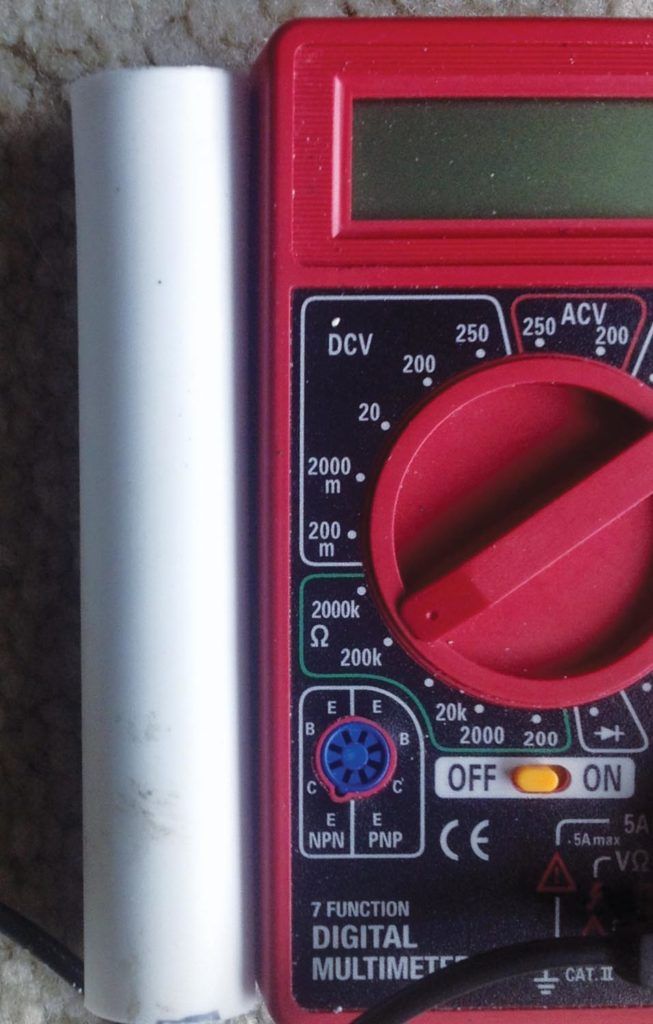
This handy tester is rugged enough to be stored in your tool tray with your other spark plug tools without fear of damage. It can be built for less than $10 in less than 30 minutes. Here’s what you’ll need:
- Harbor Freight 7-Function Multimeter (often free with any purchase at Harbor Freight). If you don’t have a free coupon, it will typically be priced at less than $7.
- One foot of 7/8-inch O.D. x 5/8-inch I.D. plastic pipe.
- Glue—I used HFT Super Glue from Harbor Freight.
Cut a 4½-inch section of pipe and attach with glue to the left side of the multimeter as shown in Photo 1. (Make sure it is glued to the case in a way that will leave the back of the case free for removing and replacing batteries when required.)
Cut a 3-inch section of pipe and then cut it the long way so you have two half-round pieces. Cut one of these lengthwise so you now have two quarter-round pieces, as seen in Photo 2.
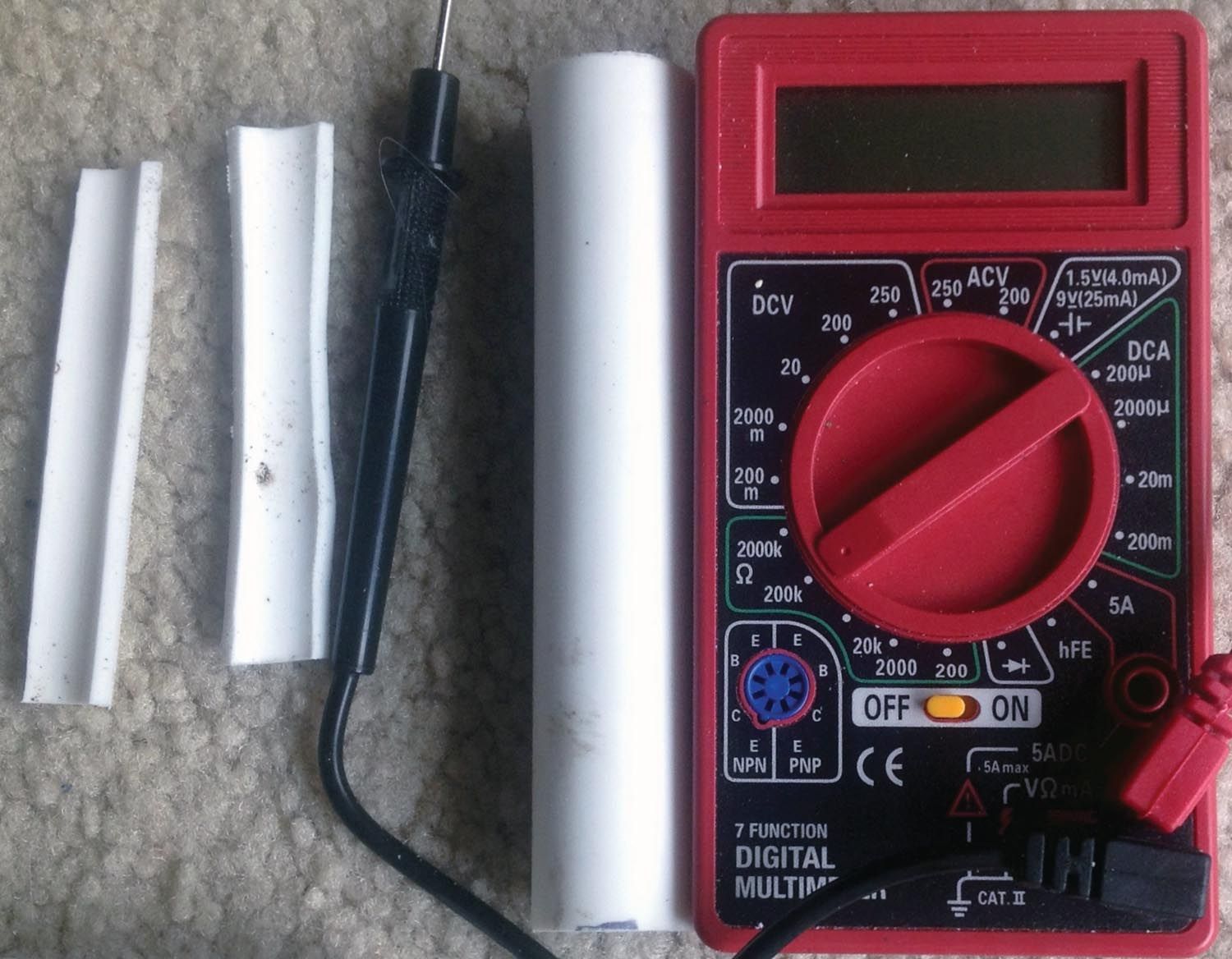
Glue the two quarter-round pieces to the black lead of the multimeter. They should be attached so that they abut the bottom of the ½-inch diameter portion of the lead. Photo 3 shows one of these pieces in position.

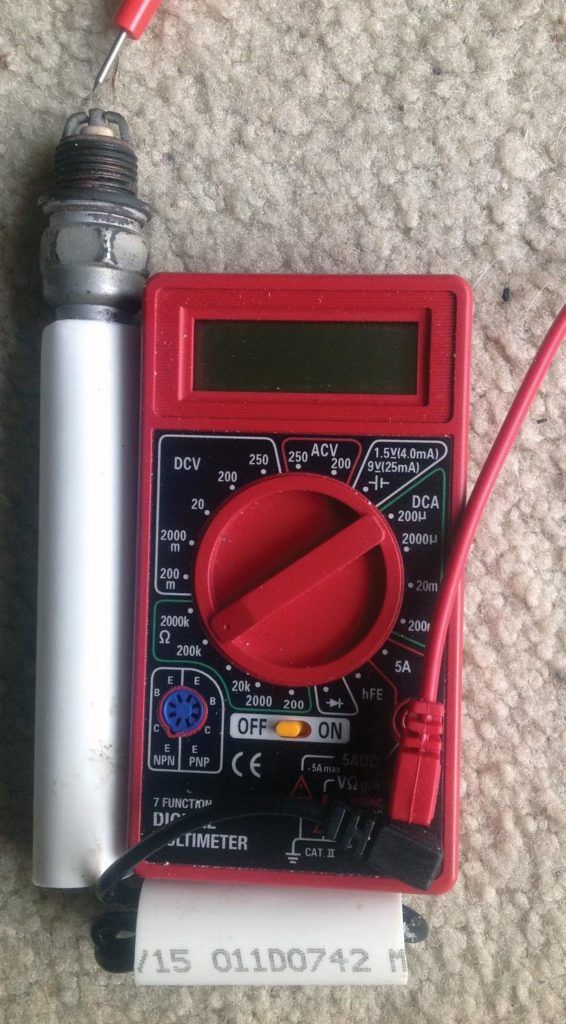
Place a few drops of glue on each side of the outside of the quarter-round pieces of pipe, then slide this assembled black lead with quarter-rounds attached into the 4½-inch section of pipe until the metal point on the lead is approximately 1/8 inch below the top end of the pipe.
Cut a 2½-inch section of pipe and glue it to the bottom end of the multimeter as shown in Photo 4. Again, assure it is glued to the case in a manner that will leave the back of the case free for removing and replacing batteries when required.
Fold the excess black lead cable and place it in the 2½-inch section of pipe.
The completed tester is shown in Photo 5 with a top view in Photo 6. Note that some plugs have a larger diameter than standard. If your plugs fall into this category, you will need to use larger diameter pipe or bore out the piece that the plug goes in to fit your plugs.
Have a shop tip of your own? Send us an email at [email protected].
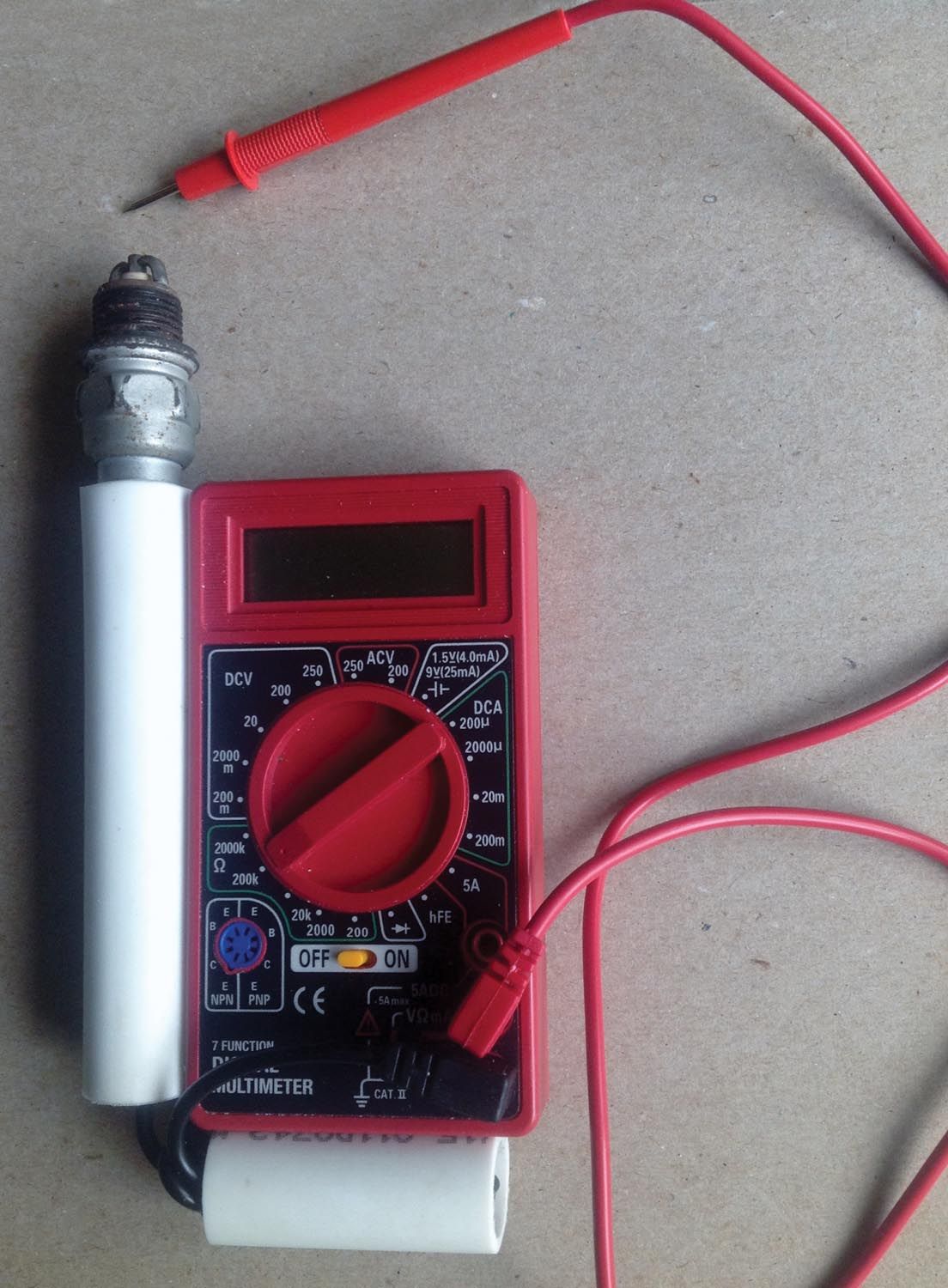
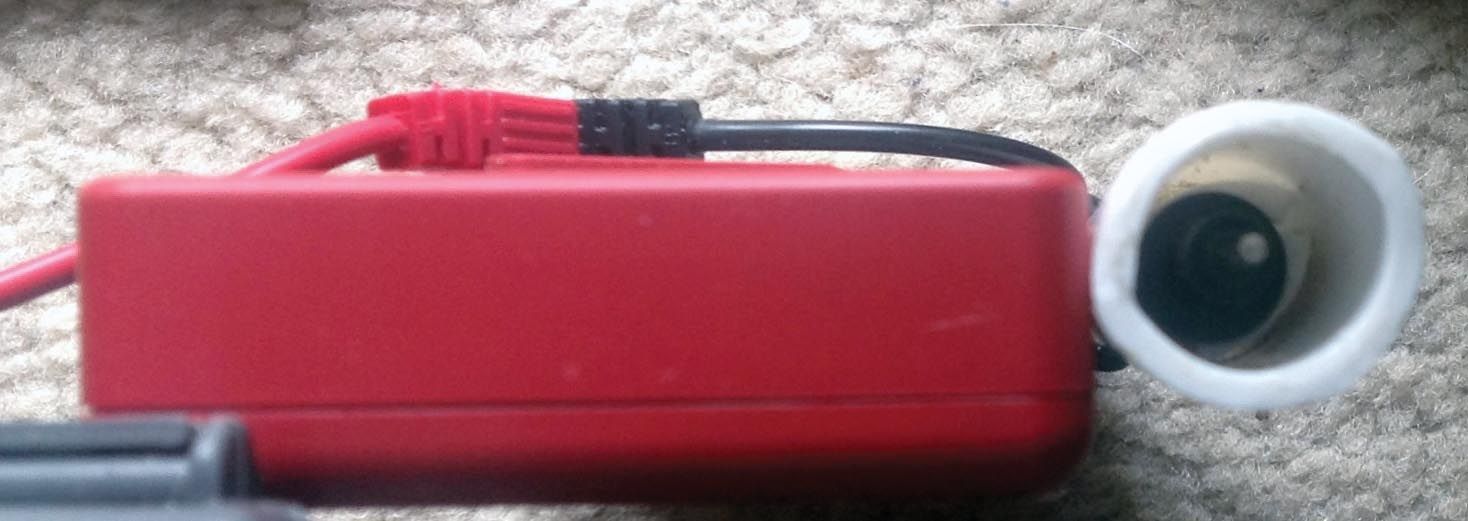





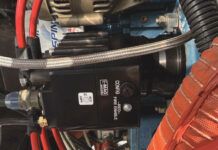





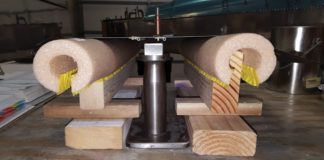

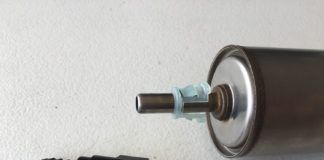
I’m curious about the necessity for the PVC modifications to the multimeter. Is the purpose of the PVC simply to ensure proper alignment between the test lead and plug?
The pvc allows for easier handling. It can be difficult to hold the plug while carefully touching the probes to the correct locations to get an accurate measurement. the bottom piece provides a place for the excess cable.